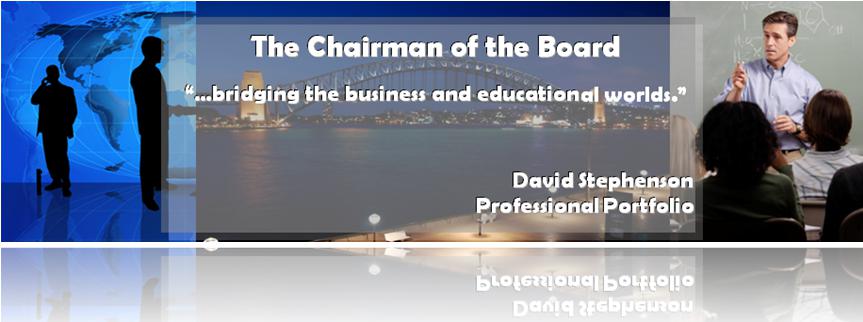

| DESIGNER |
LEADER | LEARNER | MENTOR |
| REFLECTIVE PRACTITIONER | STUDENT LEARNER |
| As I walk away
from the ITS experience, I reflect back on all that I have
gained. This program has not only taught me about technology and
how to incorporate it into classrooms lessons, but it has also taught
me quite a bit about myself. It has really caused me to
objectively look at my lesson plans, teaching styles and whether or not
my students are getting the value that they need for 21st century
learners. I am always asking how I can improve the process. One of the first things that this program confirmed for me was my preference for hands on and visual learning. I am sure that I am very similar to my own students in this way. It is clear that hands on learning is much more effective and powerful than sitting through routine lectures and discussions, like so many others did. When it came to learning the differences between the different types of databases from the very first semester, using the Rainforest Database to complete the Letter to Don and creating the Presidents Database and Crime Database in Microsoft Access to complete the Ideal Candidate Personal Ad and Crime Solvers Mystery allowed for self exploration instead of just being told about the differences or reading about them in "Technology for Teaching." My preference for this type of learning continued in our use of online chats to discuss the course material and through the evaluation and development of our own WebQuests. The process of learning about WebQuests afforded me the opportunity to utilize newfound knowledge from the program and discover first hand how the technology could be incorporated into my own classroom. Clearly, the hands on activities made it possible to bring the purposes and possibilities of databases and telecommunications to life, thus making them more real world for my style of learning. I also look back on the summer 2012/Spring 2013 semesters, which opened my eyes to the possibilities of virtual classrooms and working collaboratively in a classroom environment while being remote. While learning about the possibilities and limitations of online learning, I discovered that instead of being forced to work at the same pace as the rest of the class, taking courses online allowed me time to digest information and fully develop a thoughtful response before completing an assignment, which is just one of the many benefits of online learning. This learning also allowed me to work more one on one with instructors and in smaller, more intimate group settings as opposed to a larger classroom environment. It afforded more pointed conversations, even though these discussions took place virtually as opposed to in person. Although these learning environments are not ideal for every student, it is clear that they offer me opportunities that might otherwise be unavailable in more traditional classroom formats. The downside here was the feedback loop. With my sales and marketing background, I thrive on seeing what you are thinking and the immediacy of a comment or a look. This was a potential down fall for me, as well as others in the course. Effective teachers are reflective. Every time I enter my classroom and see my "random teacher thoughts book," which is my teacher journal and stories from the classroom that I have had for over 6 years. While teaching the various projects, I have jotted down notes of what worked with the lesson/project, or what did not. Funny stories and comments that the students say also provide insight into their experiences in my class. Good bad or indifferent, all will help improve my delivery of content and material for my classroom. I analyze the data and comments as a snapshot of how the classroom fits into the context of my overall professional growth. I have found that it is very important to plan ahead. I have also found out that having a plan B, C and D are extremely beneficial--especially when dealing with technology! Likewise, thinking about what students will need to know in order to accomplish one's goal is a very important step when planning a lesson or unit. It is almost like reverse engineering in industry: find out the end goal and go back from there to backfill how you will deliver the content. Also, students need to be introduced to new technologies in ways that allow them to focus on the tool, not the content. You cannot teach two new things at once--I tried and failed on this level a bunch of times. As you read through my practicum lessons and units, you will see how much more reflective I have become. The progression of my own growth in the area of reflection is very evident; in the first practicum, I have many instances off finding fault in my own planning or design in my teacher journal. With the subsequent, practicums--including an entire semester based one--each on has improved based on the previous experience. There were fewer comments and a more confident feeling with comments on improvements, delivery and content. I look forward to being constantly reflective in the years to come, especially while continuing my authentic lessons and activities. |